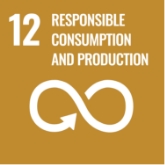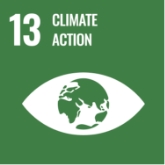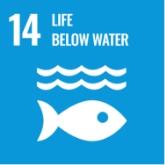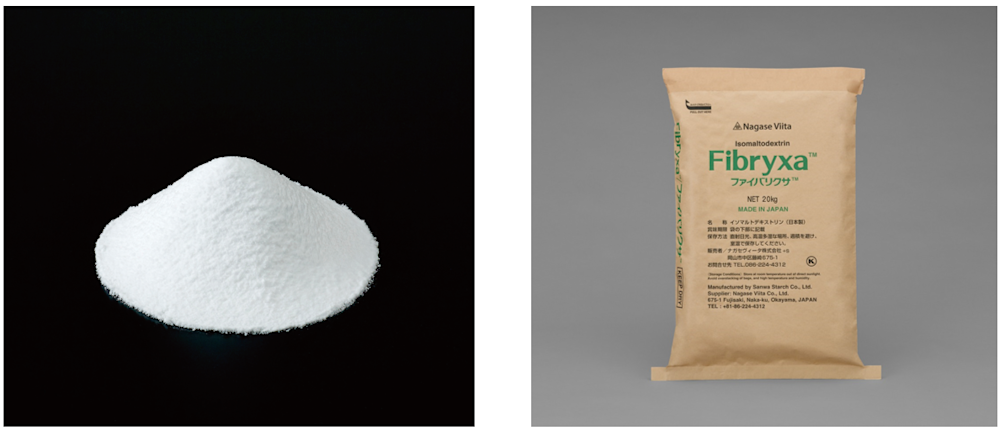


Nagase Viita Co., Ltd. (Headquarters: Shimoishii, Kita-ku, Okayama; Representative Director: Takahiko Mandai), a member of the NAGASE Group, is pleased to announce that isomaltodextrin (product name: FibryxaTM), which we develop, manufacture, and sell, has been registered as a material conforming to the criteria for inclusion in the Positive List (B-6 Other 1: Organic Materials) under the Japan BioPlastics Association (JBPA)’s Biodegradable Plastics identification indicator system and Marine Biodegradable Plastics identification indicator system.This registration marks the third Nagase Viita material to be included on the Association’s Positive List, following trehalose and pullulan.
Conventional biodegradable plastics often decompose only under specific conditions, such as in soil environments that are high in temperature, humidity, and microbial activity. In contrast, they are generally less biodegradable in environments like the ocean, which are characterized by a lower concentration of microorganisms, low temperatures, and limited nutrients. With its inclusion on the Marine Biodegradable Plastics Positive List, our material has now been recognized as suitable for broader application across various biodegradable plastic products.
Biodegradable Plastics Positive List – B-6 Other 1: Organic Materials
Marine Biodegradable Plastics Positive List – B-6 Other 1: Organic Materials
Measures to address marine plastic pollution are being strengthened in many countries, including the EU and Japan, with increasing moves to recommend or mandate the use of marine-biodegradable materials. The Japan BioPlastics Association (JBPA)’s Biodegradable Plastics identification indicator system and Marine Biodegradable Plastics identification indicator system adopt internationally recognized testing methods. As a result, in addition to applications within Japan, our product holds strong potential for expansion into overseas markets. Moving forward, we will actively work to broaden our sales efforts.
Note: Biodegradable: Pertains to materials released into the environment, including soil, rivers, and oceans, where microorganisms facilitate their breakdown into inorganic substances.
【Background and the Future】
Plastic products play an essential role in our daily lives, yet they resist natural degradation by Earth's microorganisms. The resultant marine pollution from plastic waste poses a pervasive global environmental challenge. Each year, millions of tons of plastic waste enter the world’s oceans, affecting marine life and ecosystems. There is growing concern that these plastics may break down into microplastics and be absorbed into the human body. Furthermore, plastic products rely on fossil fuels during production, and when incinerated, they emit large volumes of carbon dioxide, thereby accelerating global warming.
Consequently, there is a swift global push towards decarbonization, and the landscape of manufacturing is rapidly transforming in terms of sustainability. This shift is evidenced by the implementation of a carbon tax on companies within the European Union. Japan is also contemplating the comprehensive adoption of a carbon tax, necessitating the chemical industry to transition towards manufacturing with biodegradable materials that can undergo rapid decomposition in various environments, including soil, rivers, and oceans.
In light of these circumstances, isomaltodextrin, following trehalose and pullulan, which are already demonstrating expanding potential for applications in the chemical industry, has now also been approved by the JBPA as a material suitable for use in biodegradable plastic products.
This registration opens the door to potential use in fields where petroleum-based chemicals have traditionally been used, such as food packaging and agricultural materials.
Through the development, manufacture, and promotion of sustainable materials, we are committed to contributing to the realization of a more sustainable society.

For Reference
[Definition and characteristics of bioplastics]
The Japan BioPlastics Association (JBPA) defines bioplastics as “polymer materials that are produced by synthesizing, either chemically or biologically, materials which contain renewable organic materials (natural organic polymer materials that are not chemically modified are excluded).”
See: http://www.jbpaweb.net/english/e-bp/index.html
[Japan BioPlastics Association]
Founded in 1989, the JBPA is a private organization dedicated to advancing the adoption of bioplastics—inclusive of biodegradable and biomass-based plastics —as key materials in creating a recycling-based society.
The JBPA collaborates with pertinent ministries, agencies, and organizations to primarily administer the identification indicator system, adhere to ISO international standards, and draft JIS documents.
[The Japan BioPlastics Association Identification System]
The JBPA has three identification systems: (1) Biomass-based Plastics Identification Indicator System, (2) Biodegradable Plastics Identification Indicator System, and (3) Marine Biodegradable Plastics Identification Indicator System. Regarding (3), since the density of microorganisms in the ocean is an order of magnitude lower than on land, and the types of microorganisms are different from those on land, a new system to certify products that are sufficiently biodegradable and safe in the marine environment has been in operation since July 2023.
[Biodegradability Testing Methods and Results]
Biodegradability and marine biodegradability tests were conducted in accordance with the standards specified by the JBPA. A substance is classified as readily biodegradable if it shows over 60% biodegradation, indicating that it decomposes rapidly in the natural environment.
According to the Biodegradability Test (OECD Guidelines for the Testing of Chemicals, No. 301F, July 17, 1992), the material exhibited a biodegradation rate over 60% (73%) after 28 days of incubation, confirming that it is readily biodegradable.
In the Marine Biodegradability Test (ASTM-D6691), the material achieved a biodegradation rate of 99% after 30 days of incubation, equivalent to that of cellulose.
◆For inquiries regarding applications of isomaltodextrin in the chemical engineering field:
New Business Development Department, Nagase Viita Co., Ltd. Tel: +81-86-224-4311 (main line)
◆For inquiries regarding press releases:
Communication Design Department, Nagase Viita Co., Ltd. Tel: +81-86-224-4315
